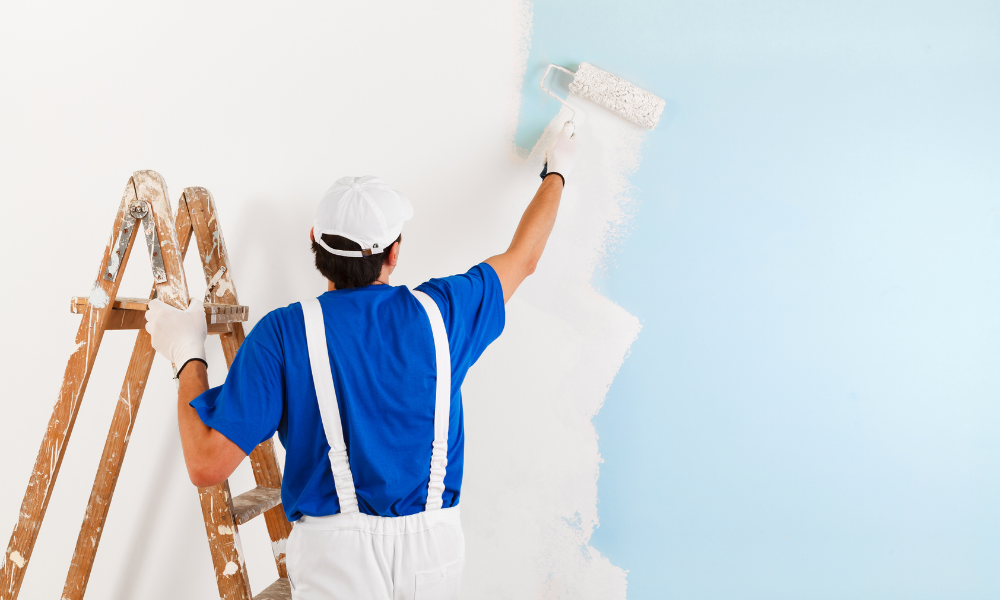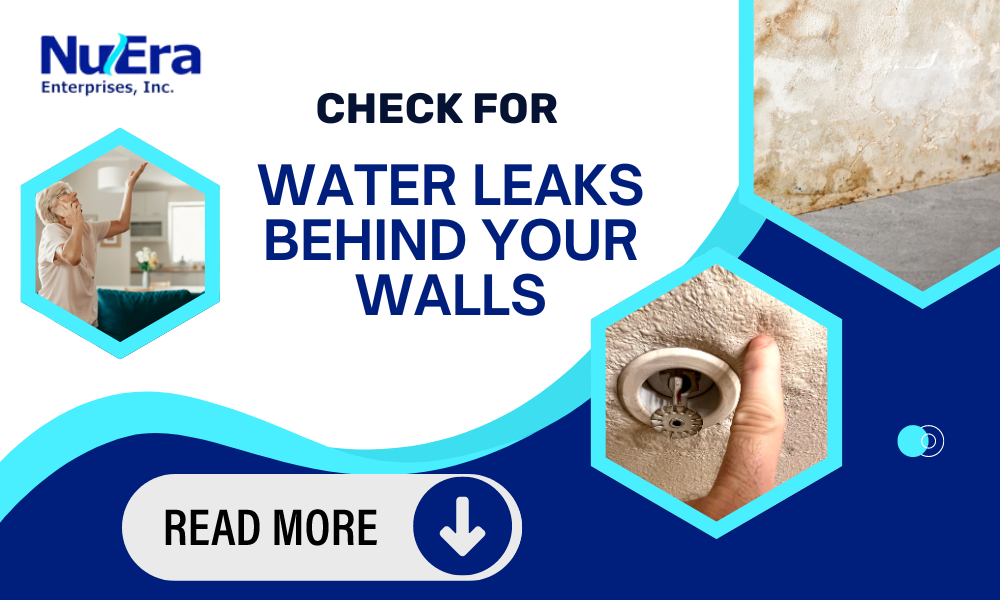How to Dry Water Damaged Carpeting
Flooding within your home can result in significant damage. Whether it originates from a burst pipe, a faulty appliance, or inclement weather, the costs associated with repairs can be substantial. That is why it is crucial to address any water damage immediately. Leaving it unattended may lead to severe structural harm and mold growth. Moreover, dealing with contaminated water like a sewage backup on your carpeting exposes you to hazardous contaminants that can negatively impact your health.
What to Do Before Attempting to Dry your Wet Carpet
It is crucial to get your wet carpet dry as soon as possible after water damage. However, there are a few things you should take into consideration first:
- Get any leaks fixed – Before starting the process of drying your carpet, you should find out where the water is coming from and resolve that issue. Whether it is coming from a leaky appliance, a broken pipe, or something else, you will need to get that fixed before starting the drying process so that you do not cause further damage to your carpet.
- Clear everything from the carpeting – The carpet cannot be properly dried unless you remove all items that are sitting on it. To see the areas where the carpet got wet, you should remove everything sitting on your carpet.
- Limit walking on wet carpeting – Walking on a wet carpet can not only make it dirty, but also accelerate its wear and potentially causes more damage. To prevent this, avoid making multiple trips into the room with wet carpeting and instead, try to bring out all the items you need at once.
How to Dry your Carpet After a Flood
First you will need to figure out where the leak is coming from so the water doesn’t continue to affect your carpet. Then you can try to save your carpets by doing the following actions:
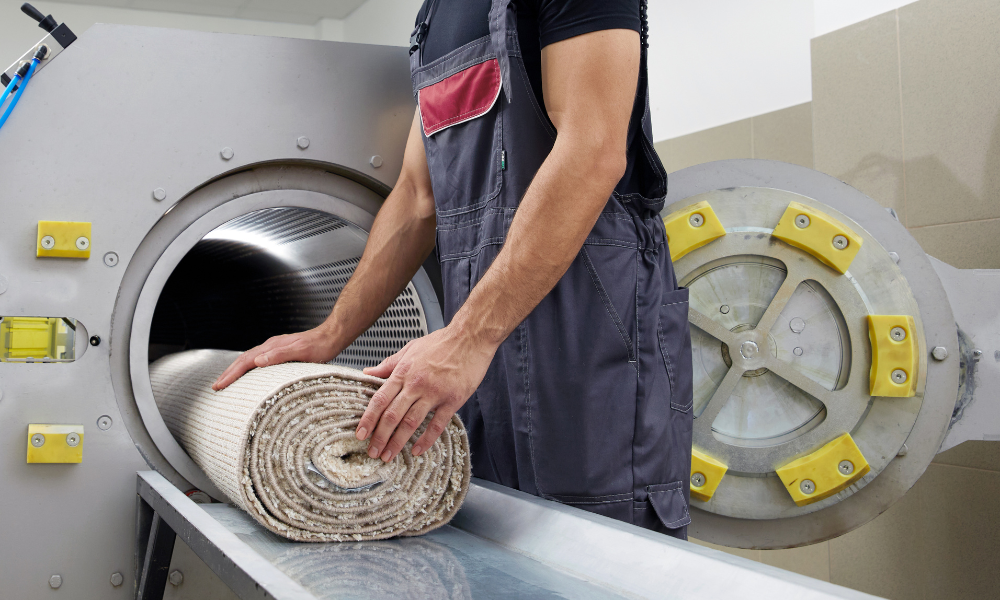
- Get the water removed – The best way to remove water from your carpet is to use a water extractor or a carpet cleaning machine to get as much water out of it as you can. Also, make sure to pull the corners of your carpet back and then use the shop vac to remove any standing water under the pads.
- Use a fan and open windows – Set up as many fans as possible throughout the area that got wet. You can also rent high-powered fans to dry your carpet. Keep in mind that it will still take several days for the carpet to completely dry with this method. Adding a dehumidifier can speed up the drying process. Make sure to open the windows if the weather allows you to do so to help get the air flowing and dry the carpet faster.
- Sanitize and clean the area – It is very important to clean and sanitize any areas that have gotten wet to prevent mold growth. Clean the area with soap and water and then disinfect the affected areas with a solution made with one cup of bleach to one gallon of water. Always make sure to wear protective rubber gloves when using bleach.
- Remove all furniture – If you have heavy furniture covering wet areas of the carpet, make sure to remove it so you can check for wetness in those areas as well.
- Steam clean your carpet – Steam carpet cleaning is performed at high temperatures, effectively eliminating contaminants that may be lurking in your carpet. Even if a carpet has been cleaned after getting wet, there could still be bacteria deeply embedded in its fibers. That’s why it’s crucial to opt for steam cleaning, as it not only eradicates bacteria but also eliminates any potential mold spores that may have developed.
- Use baking soda or a hairdryer – If small areas of the carpet are wet, you can use baking soda to absorb the moisture. First, take some towels and absorb as much water as possible. Then sprinkle baking soda over the wet areas and leave it sitting there for 30 minutes. Finally, vacuum up any leftover baking soda which should leave the carpet dry and fresh. You can also use a hairdryer to dry small areas of the carpet that got wet. Just hold the hairdryer a few inches from the carpet and move it back and forth, allowing the area to cool off before checking if it is dry. If you touch it while still hot, it may be difficult to tell it if has dried.
- Have professionals inspect your carpet padding – You should reach out to professionals to check the padding under your carpet. They can let you know if it can be dried or if it should be replaced. The carpet padding should never be left wet as it can create mold growth that will further damage the carpet and create unsanitary conditions in your home.
Call the Water Damage Professionals
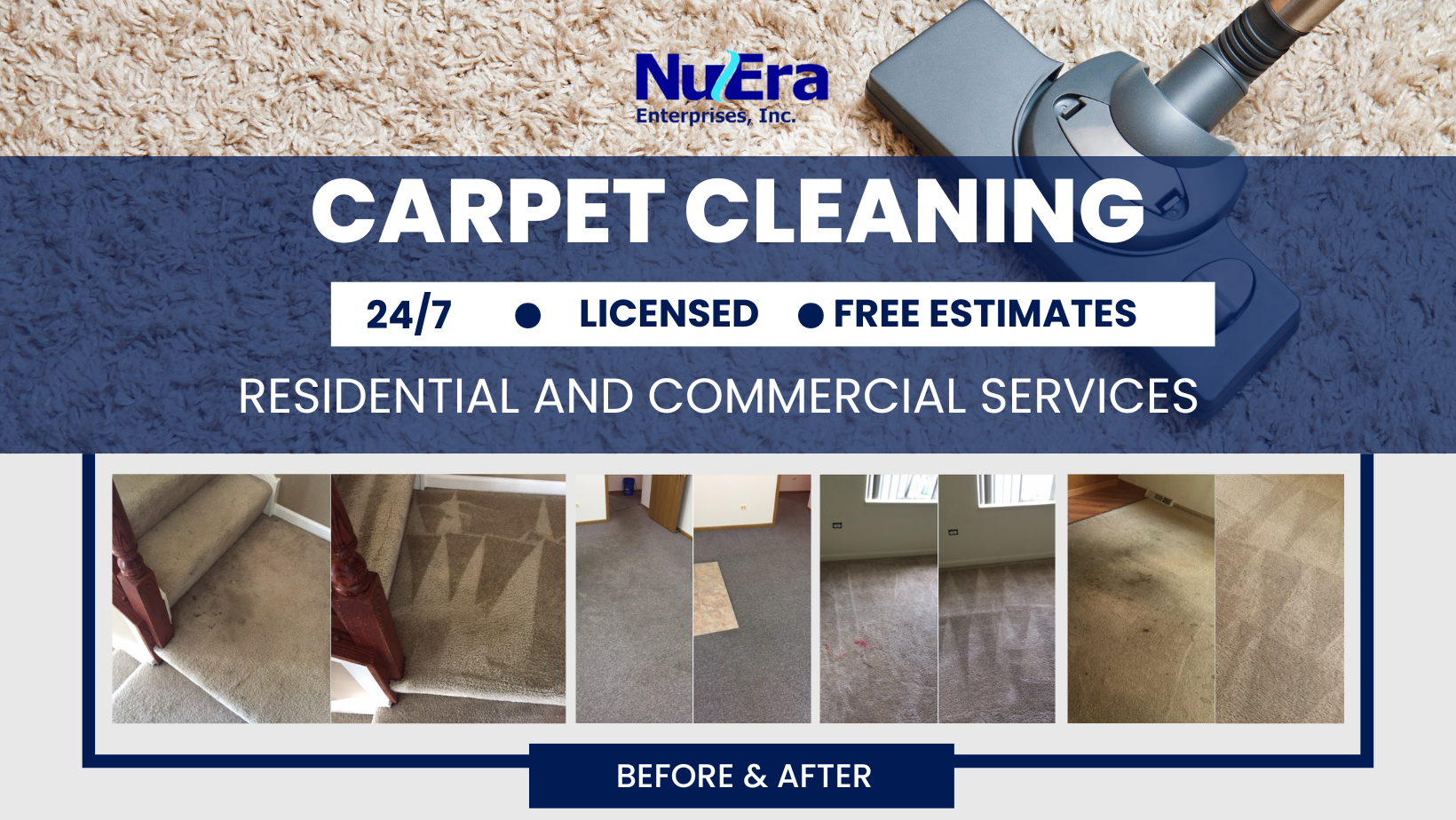
If you’ve experienced water damage at your home or business due to a leaky appliance, a flood, or a natural disaster, make sure to reach out to our professionals at NuEra Restoration and Remodeling. Our water damage restoration professionals will arrive quicky, assess the damage, and clean, dry, and restore your property back to its original state. We have the proper equipment and use the best methods in the industry to handle water damage, so you can rest assured that we will do quality work.
If you are dealing with wet carpeting, our fully licensed and insured technicians will make sure to dry and clean it quickly and efficiently so you can get your property back to its original state. You can call NuEra Restoration and Remodeling at (847) 217-1036 to learn more about our carpet and upholstery cleaning services or get a free estimate.
Related Posts:
How to Remove Paint Fumes from Your Home
If you’ve recently painted your home, you’re likely aware that the residual paint fumes can…
Is it Possible to Paint a Brick House?
In recent years, homeowners have embraced several popular trends for brick houses, including exterior brick…
How to check for Water Leaks Behind Your Walls
Proper maintenance of your home is of utmost importance. It ensures the structural integrity, safety,…
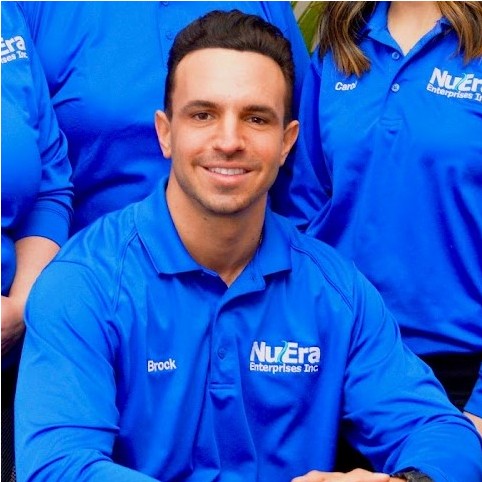
CEO of NuEra Restoration and Remodeling – certified by IICRC and specializes in residential and commercial building restoration, carpet cleaning, painting, and remodeling – 10+ years of experience in business and restoration with strong leadership skills.

